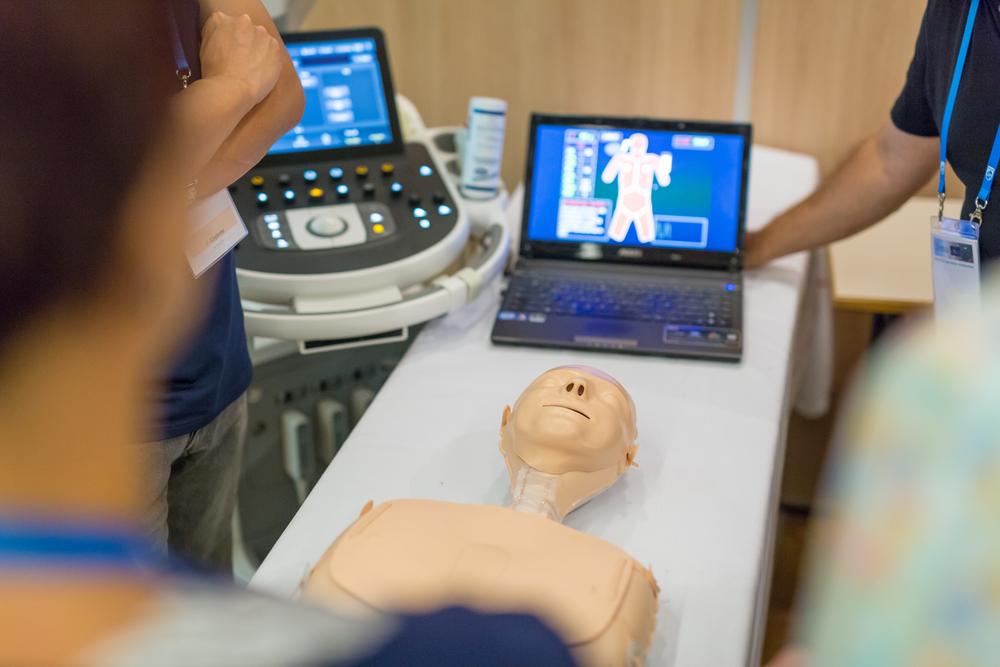So what is simulation?
Simulation in elearning is a fully immersive experience in which real-life situations are replicated to interact with the learner. A good use of simulations thrusts the learner into a scenario and grip them enough to absorb and learn by doing. This is a rapidly growing trend in elearning and one that Saffron have been talking about forever! But it appears to have suddenly made resurgence as the need for ‘engagement’ in learning becomes more essential. It’s an exciting concept for a graphic designer. Executed well, simulations in learning provide learners with intuitive interactions, premium videography and fully immersive communication. A great example of simulation elearning has been recently created by the Resuscitation Council UK. The ‘Life-saver’ simulation aims to spread knowledge on CPR to the general public. The outcome is compelling, intriguing and educational all rolled into one. Yep, it’s what every creative team within elearning strive for… So how has this been achieved? Keep reading!
Show don’t tell
Video helps us simulate real-life situations in an engaging way. We turn to video to assist us with the simplest problems. David Mogensen, Head of YouTube Ads Product Marketing, states that of smartphone users, 91% turn to their devices for ideas while completing a task, looking for ‘how-to’ videos. We are hooked, we use video to learn to cook, learn to use software, learn sporting rules; the possibilities are endless. Digital technology has evolved so much now that it means that we can implement striking visuals, special effects and sounds making simulations a valuable resource to learn from.
We are flooded with ground-breaking technology on the most popular platforms.
Facebook has recently launched a 360° photo and video function, all the more reason to show off your holiday snaps. Youtube has also embraced the 360° trend and allows users to re-angle the camera lenses within videos; it’s virtual reality without the head gear! You can even swim with sharks! This is a sure sign that elearning providers should embrace modern photography and video technology; harnessing it to create new and exciting simulations for the learner. The more intuitive the design experience the higher the likelihood is of the user wanting to participate or even return.
Despite all of these modern elements, video in learning still doesn’t have to be passive, we shouldn’t just be hitting play and sitting back to relax. It’s often suggested that video in elearning needs to be kept short. The same goes for simulation, where simple tricks can help keep the learner immersed…
Branch out
Providing the user with choices keeps the simulation realistic and intriguing. Back to my example ‘Life-saver’: this simulation tests the user on decision-making skills and feeds this information into results received upon completion. It’s educational for the user and still maintains a high quality of design. The questions and answers are short and well-depicted; providing quick decisions with real-life consequences. We are far too often provided with large amounts of content in elearning, which proves how difficult it is to fit into minimally designed templates. Keeping the content snappy aids design, keeps the video flowing and creates a sense of urgency in the decision-making process. Video content in simulation should be well-thought out so that it does the vast majority of the work in explaining a scenario. It should need minimal narration. By providing the learner with different consequences of the decisions they make we are keeping the simulation interesting and empowering them by introducing consequences behind their actions. Again, we are showing not telling the learner.
Just checking you’re still there
A recently published blog by Saffron’s Toby Harris explored the reduction in the human attention span. Here’s where Saffron’s problem solvers get excited. How can we check the learner is still paying attention within a simulation environment? Easy, we use modern, diverse and intuitive interactions. No-one wants to absorb learning content by monotonously clicking through content. Yes, you need to ask content-based questions but it also pays to invest in other interactions that are not derived from learning. These interactions take the simulation away from generic elearning design and add an all-important gamification element. If these interactions help to increase concentration levels it can only have a positive effect on the accuracy of results and learning within courses.
From opening a meeting room door, boarding public transport to helping save someone’s life, elearning creators can now hand the controls over to the user to experience first-hand. A recent simulation created for the film advertisement of “The Kingsman” movie even gives the learner an option to sync their mobile device to the monitor in order to use it as a controller… What’s not to like?
Here at Saffron, we are evolving our practise with the latest trends of dragging, scrolling, sliding, holding, tapping, and much more (all whilst making sure we don’t neglect the good old fashioned click). Coupled with high quality video these interactions create an ever-increasing immersive environment for the user. These techniques have been implemented within a recent simulation experience designed for a global consultancy, for which Saffron’s Karim Ladak says, ‘The thing that simulations really do — if done well — is quickly get the emotional investment of the learner, which is the element that causes behaviour change. And behaviour change of small measures have a ripple effect on an organisation that can save millions or generate billions.’
Leave a comment to tell us how you’re doing this in your organisation or for your clients or get in touch to have a chat about how we do it.



One Response